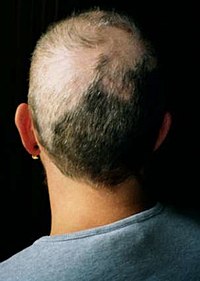
Acute fluoxetine differently affects aggressive display in zebrafish phenotypes
Sign Up to like & getrecommendations! Published in 2019 at "Aggressive Behavior"
DOI: 10.1002/ab.21797
Abstract: Zebrafish have been introduced as a model organism in behavioral neuroscience and biological psychiatry, increasing the breadth of findings using fish to study the neurobiology of aggression. Phenotypic differences between leopard and longfin zebrafish were… read more here.
Keywords: display; longfin zebrafish; leopard longfin; fluoxetine ... See more keywords

Cost‐Effective Pharmaceutical Implants in Fish: Validating the Performance of Slow‐Release Implants for the Antidepressant Fluoxetine
Sign Up to like & getrecommendations! Published in 2023 at "Environmental Toxicology and Chemistry"
DOI: 10.1002/etc.5613
Abstract: Internal, slow‐release implants can be an effective way to manipulate animal physiology or deliver a chemical exposure over long periods of time without the need for an exogenous exposure route. Slow‐release implants involve dissolving a… read more here.
Keywords: toxicology; release implants; chemistry; fluoxetine ... See more keywords

Downregulation of glucose‐6‐phosphatase expression contributes to fluoxetine‐induced hepatic steatosis
Sign Up to like & getrecommendations! Published in 2020 at "Journal of Applied Toxicology"
DOI: 10.1002/jat.4109
Abstract: Fluoxetine is a first‐line selective serotonin reuptake inhibitor widely applied for the treatment of depression; however, it induces abnormal hepatic lipid metabolism. Considering decreased expression or function of glucose‐6‐phosphatase (G6Pase), a key enzyme in gluconeogenesis,… read more here.
Keywords: hepatic steatosis; fatty acid; fluoxetine induced; expression ... See more keywords

Examination of antimicrobial effect of fluoxetine in experimental sepsis model: An in vivo study
Sign Up to like & getrecommendations! Published in 2022 at "Journal of Biochemical and Molecular Toxicology"
DOI: 10.1002/jbt.23240
Abstract: Since most infectious diseases can develop into sepsis, it is still a major medical problem. Some in‐vivo studies showed promising properties of fluoxetine in the treatment of infections. This study aims the antimicrobial effect of… read more here.
Keywords: sepsis; effect; fluoxetine; experimental sepsis ... See more keywords

Transcriptomic evidence for immaturity induced by antidepressant fluoxetine in the hippocampus and prefrontal cortex
Sign Up to like & getrecommendations! Published in 2019 at "Neuropsychopharmacology Reports"
DOI: 10.1002/npr2.12048
Abstract: The molecular and cellular mechanisms underlying the antidepressant effects of fluoxetine in the brain are not fully understood. Emerging evidence has led to the hypothesis that chronic fluoxetine treatment induces dematuration of certain types of… read more here.
Keywords: transcriptomic evidence; induced antidepressant; evidence; evidence immaturity ... See more keywords

Occurrence of caffeine, fluoxetine, bezafibrate and levothyroxine in surface freshwater of São Paulo State (Brazil) and risk assessment for aquatic life protection
Sign Up to like & getrecommendations! Published in 2021 at "Environmental Science and Pollution Research"
DOI: 10.1007/s11356-020-11799-5
Abstract: The prioritization of active pharmaceutical ingredients (APIs) for monitoring programmes and/or environmental risk assessment (ERA) purposes is based on several criteria, including environmental occurrence data. However, data on API occurrence in Brazilian surface freshwaters are… read more here.
Keywords: risk; surface; occurrence; levothyroxine ... See more keywords

Long-lasting effects of fluoxetine and/or exercise augmentation on bio-behavioural markers of depression in pre-pubertal stress sensitive rats
Sign Up to like & getrecommendations! Published in 2017 at "Behavioural Brain Research"
DOI: 10.1016/j.bbr.2017.01.043
Abstract: HIGHLIGHTSMaximal exercise intensity (as estimated by VO2max) in rats increases with age and should be adapted accordingly.Pre‐pubertal fluoxetine and fluoxetine plus low intensity exercise exerts early antidepressant‐like effects.Pre‐pubertal low intensity exercise or low dose fluoxetine… read more here.
Keywords: pre pubertal; treatment; intensity; lasting effects ... See more keywords

Neonatal fluoxetine exposure modulates serotonergic neurotransmission and disturb inhibitory action of serotonin on food intake
Sign Up to like & getrecommendations! Published in 2019 at "Behavioural Brain Research"
DOI: 10.1016/j.bbr.2017.07.038
Abstract: &NA; The neurotransmitter serotonin (5‐HT) acts as an important regulator of the critical neurodevelopmental processes and thus alterations in 5‐HT signaling early promotes permanent structural and functional changes in brain. The selective serotonin reuptake inhibitors… read more here.
Keywords: disturb inhibitory; food intake; exposure; serotonin ... See more keywords

Distinct patterns of abnormal lateral orbitofrontal cortex activity during compulsive grooming and reversal learning normalize after fluoxetine
Sign Up to like & getrecommendations! Published in 2021 at "Biological psychiatry"
DOI: 10.1016/j.biopsych.2021.11.018
Abstract: BACKGROUND Patients with obsessive-compulsive disorder (OCD) display disrupted performance and abnormal lateral orbitofrontal cortex (LOFC) activity during reversal learning tasks. However, it is unknown whether compulsions and reversal learning deficits share a common neural substrate.… read more here.
Keywords: compulsive grooming; fluoxetine; grooming reversal; reversal learning ... See more keywords

Sex-dependent effects of chronic fluoxetine exposure during adolescence on passive avoidance memory, nociception, and prefrontal brain-derived neurotrophic factor mRNA expression
Sign Up to like & getrecommendations! Published in 2020 at "Brain Research Bulletin"
DOI: 10.1016/j.brainresbull.2020.06.009
Abstract: Fluoxetine, a common antidepressant drug, is widely used for mental disorders therapy in adolescents. Previous animal experiments have indicated that exposure to fluoxetine during adolescence leads to persistent behavioral changes and neuroplasticity in the hippocampal… read more here.
Keywords: passive avoidance; chronic fluoxetine; fluoxetine; mrna expression ... See more keywords

An evaluation of behavioural endpoints: The pharmaceutical pollutant fluoxetine decreases aggression across multiple contexts in round goby (Neogobius melanostomus).
Sign Up to like & getrecommendations! Published in 2017 at "Chemosphere"
DOI: 10.1016/j.chemosphere.2017.02.059
Abstract: Fluoxetine (Prozac™) is designed to alter human behaviour; however, because many physiological pathways are conserved across vertebrates, this drug may affect the behaviour of fish living in fluoxetine-polluted environments. Although a number of studies have… read more here.
Keywords: goby neogobius; exposure; aggression; fluoxetine ... See more keywords